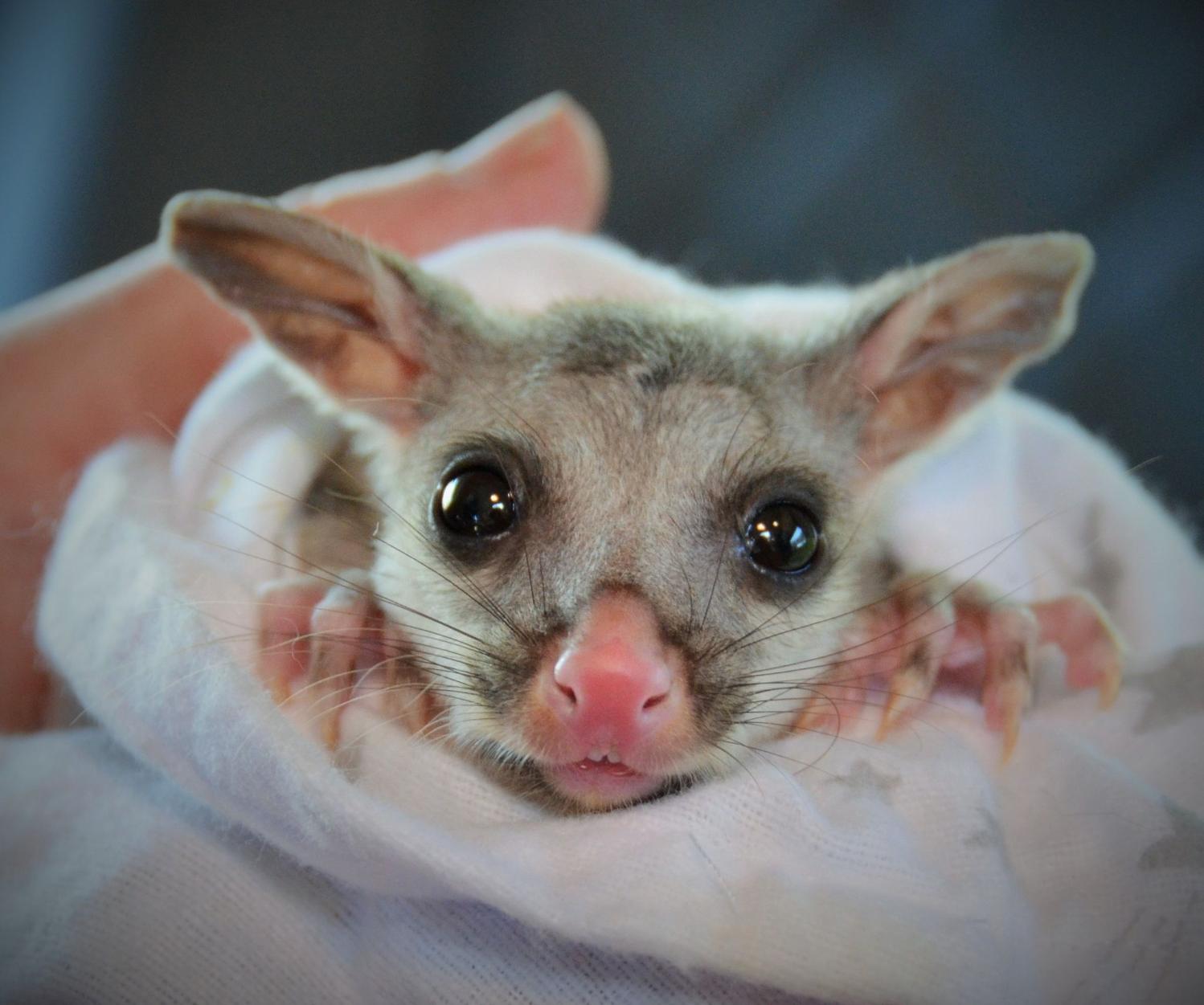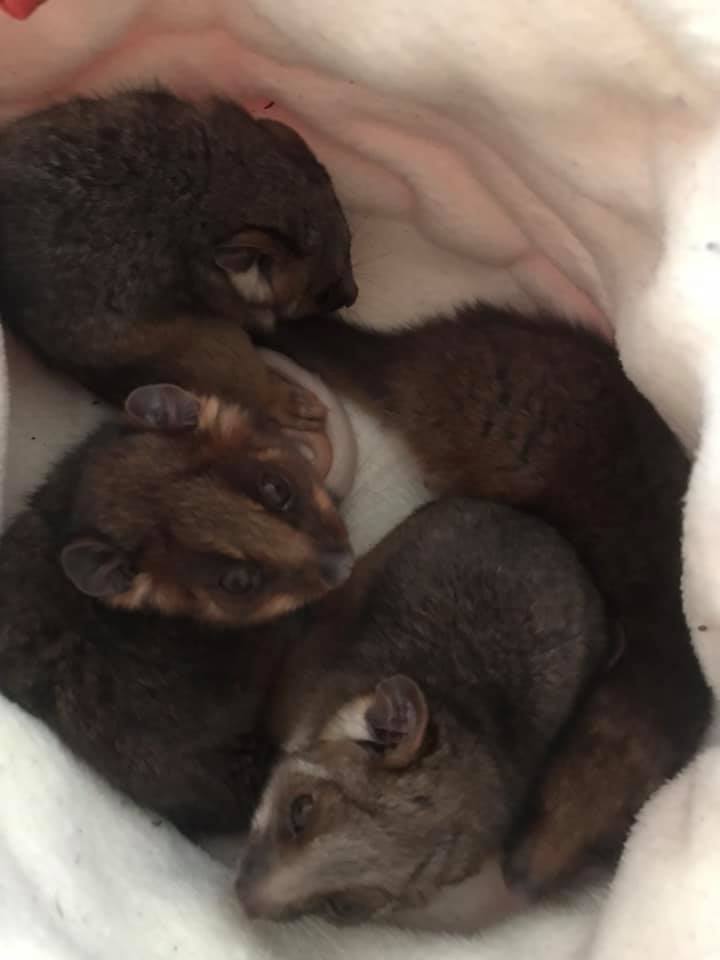Anger Over Destruction Of Pittwater Trees Grows

Residents have expressed anger this week over the continual destruction of trees in the Pittwater area. In one instance a block was cleared of 18 trees on Plateau road Bilgola Plateau, including two on the nature strip. Council had given permission for the removal of 18 trees as part of a DA in 2018, all of them mature trees such as the protected Angophora costata and endangered Spotted gums, however, the removal of one is currently under investigation as it appears it was on public land and not part of the DA's approvals.
There is a requirement attached to DA's where replacement trees are to be planted, however saplings cannot replace older and taller trees that were homes for local fauna and as Spring continues Wildlife Carers are finding more and more baby possums, birds and gliders coming into their Volunteer, paid for the special baby milk out of their own pockets, Care as a direct result of the destruction - some of these trees being cut down with the animals that live in them still in them while this is happening. No one has done a check to see if any wildlife is present and no one is on site when the tree is being killed to help any willdife injured or babies left behind by fleeing distressed mothers.

More babies brought into care this week - two of these as a direct result of tree-killers destroying their homes - photo supplied
An outcry over a similar razing at Bayview where whole blocks were cleared of every single tree, over 150 trees according to one witness, were razed in the region once well-known for being the Bayview koala sanctuary installed by Sir Hallstrom. These too were some of the old giants the area had as habitat trees for resident wildlife. Now cement driveways ready for developments is all that may be seen.
Another huge Angophora gum was witnessed being downed at the top of Elvina between Kevin and the park at Avalon. The company contractors swore at one resident when that person asked them about - stating they had approval from council - and commented re: lack of habitat. The poor lady stranded in the street by the truck blocking the road was also abused, according to witnesses.
Those who saw the truck carrying this HUGE trunk away around the Bilgola Bends have also expressed their disgust at the removal of these old large trees; especially since some of the endangered species here require old tree hollows to nest in. To be allowing this to occur during nesting season, during wildlife baby season, especially those species that are nocturnal, is 'absolutely unacceptable' residents state.
There is also a flow-on effect some residents are now experiencing. Pittwater is a hills and bays landscape and those who are midway down a hill are finding their own trees are dying due to the removal of those above their block and the subsequent run-off by water down these hills.
Residents state they want more accountability, including those stating they have permission to remove trees to produce that documentation on request, for what the community states are 'habitat trees' to be maintained instead of removed so they are safe as well as retained, and for post-DA inspections to be done long after the replacement 'sapling' has been installed to ensure these too are not removed.
More scrutiny of the effects on nearby residents trees, such as those downhill, is also called for so other trees and habitat patches are not lost as the result of DA approvals that allow the complete razing of sites and what that causes to the surrounding areas.
The sounds of chainsaws on a daily basis is becoming too much for those who grew up with wildlife at their doorstep. Maintaining tree health through the removal of dead limbs or rotted trunks is a good practice to ensure the longevity of these species - their permanent removal for improved views, because they drop leaves, because they're in the way of inappropriate developments, is feeding a fast growing call from community members that they must be retained, along with the understorey beneath their canopies.
- Are contractors breaking the law if their destruction causes the destruction of animals – the State Law for NSW covers the whole of NSW – it does not stop just because the land it covers is actually suburban. There is a requirement for someone to be present or investigations to be undertaken prior to pruning works to esnure the safety/care of wildlife. For example - during tree lopping to keep bats encroaching from reserves this is part of the POM. Native animals are protected by the Biodiversity Conservation Act 2016. All native birds, reptiles, amphibians and mammals. This is not extinguished just because it is an urban area - in fact the State Environmental Planning Policy (Vegetation in Non-Rural Areas) 2017 aims to preserve urban amenity through preservation of urban vegetation, and protect biodiversity values of urban vegetation.
- There also needs to be some recognition and register of habitat trees and for these to be maintained so they survive and so a mechanism is in place for their protection.
- The destruction of trees and undercanopy is causing problems down the hill – stormwater and residue runoff is destroying neighbours much loved trees and habitat. The assessment criteria is therefore faulty via this roll-on effect of tree felling and understorey destruction as it spreads the habitat and tree loss and incurs financial burden for residents adjacent to these areas.
- Council’s definition of what is not important in habitat and the environment’s needs do not match.
- Wildlife Carers are being put under physical and mental stress and incurring expense to meet looking after the babies killed and local Vets are picking up the medical bills – why isn’t this costed into the tree felling?
- Residents expect the canopy and habitat to be retained.
- Residents would prefer local arborists and tree companies to be employed in tree maintenance works - they have local knowledge.